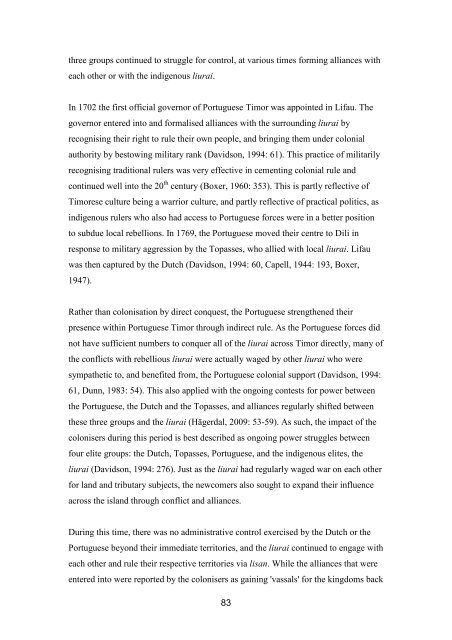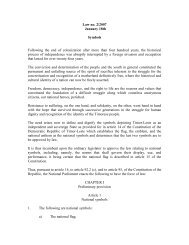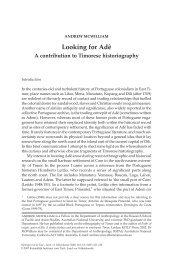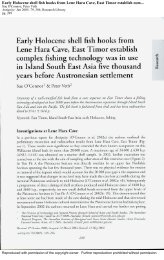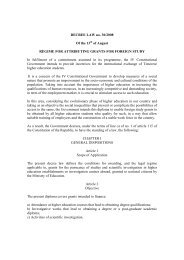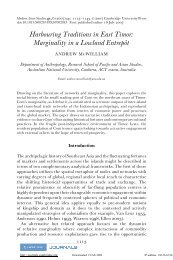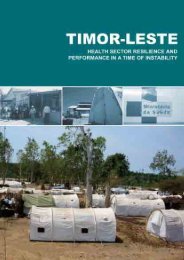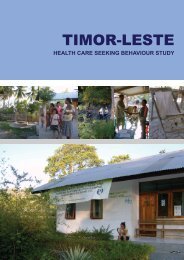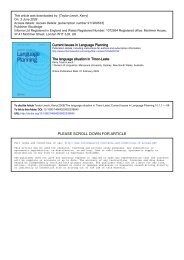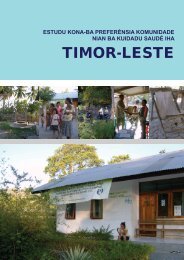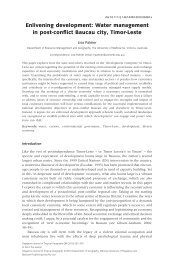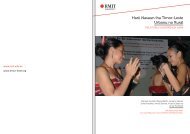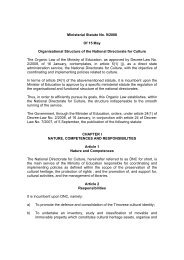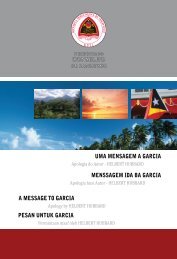Local Governance in Timor-Leste - Secretaria de Estado da Arte e ...
Local Governance in Timor-Leste - Secretaria de Estado da Arte e ...
Local Governance in Timor-Leste - Secretaria de Estado da Arte e ...
- No tags were found...
Create successful ePaper yourself
Turn your PDF publications into a flip-book with our unique Google optimized e-Paper software.
three groups cont<strong>in</strong>ued to struggle for control, at various times form<strong>in</strong>g alliances witheach other or with the <strong>in</strong>digenous liurai.In 1702 the first official governor of Portuguese <strong>Timor</strong> was appo<strong>in</strong>ted <strong>in</strong> Lifau. Thegovernor entered <strong>in</strong>to and formalised alliances with the surround<strong>in</strong>g liurai byrecognis<strong>in</strong>g their right to rule their own people, and br<strong>in</strong>g<strong>in</strong>g them un<strong>de</strong>r colonialauthority by bestow<strong>in</strong>g military rank (Davidson, 1994: 61). This practice of militarilyrecognis<strong>in</strong>g traditional rulers was very effective <strong>in</strong> cement<strong>in</strong>g colonial rule andcont<strong>in</strong>ued well <strong>in</strong>to the 20 th century (Boxer, 1960: 353). This is partly reflective of<strong>Timor</strong>ese culture be<strong>in</strong>g a warrior culture, and partly reflective of practical politics, as<strong>in</strong>digenous rulers who also had access to Portuguese forces were <strong>in</strong> a better positionto subdue local rebellions. In 1769, the Portuguese moved their centre to Dili <strong>in</strong>response to military aggression by the Topasses, who allied with local liurai. Lifauwas then captured by the Dutch (Davidson, 1994: 60, Capell, 1944: 193, Boxer,1947).Rather than colonisation by direct conquest, the Portuguese strengthened theirpresence with<strong>in</strong> Portuguese <strong>Timor</strong> through <strong>in</strong>direct rule. As the Portuguese forces didnot have sufficient numbers to conquer all of the liurai across <strong>Timor</strong> directly, many ofthe conflicts with rebellious liurai were actually waged by other liurai who weresympathetic to, and benefited from, the Portuguese colonial support (Davidson, 1994:61, Dunn, 1983: 54). This also applied with the ongo<strong>in</strong>g contests for power betweenthe Portuguese, the Dutch and the Topasses, and alliances regularly shifted betweenthese three groups and the liurai (Häger<strong>da</strong>l, 2009: 53-59). As such, the impact of thecolonisers dur<strong>in</strong>g this period is best <strong>de</strong>scribed as ongo<strong>in</strong>g power struggles betweenfour elite groups: the Dutch, Topasses, Portuguese, and the <strong>in</strong>digenous elites, theliurai (Davidson, 1994: 276). Just as the liurai had regularly waged war on each otherfor land and tributary subjects, the newcomers also sought to expand their <strong>in</strong>fluenceacross the island through conflict and alliances.Dur<strong>in</strong>g this time, there was no adm<strong>in</strong>istrative control exercised by the Dutch or thePortuguese beyond their immediate territories, and the liurai cont<strong>in</strong>ued to engage witheach other and rule their respective territories via lisan. While the alliances that wereentered <strong>in</strong>to were reported by the colonisers as ga<strong>in</strong><strong>in</strong>g 'vassals' for the k<strong>in</strong>gdoms back83


